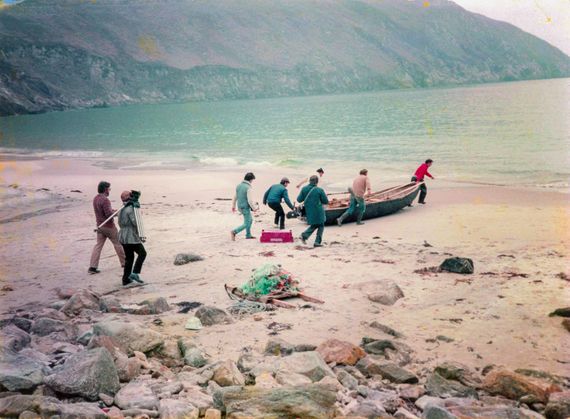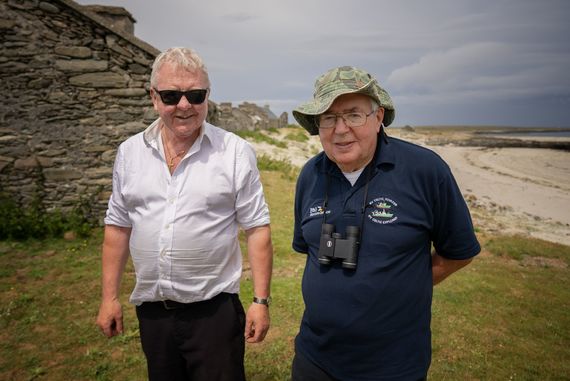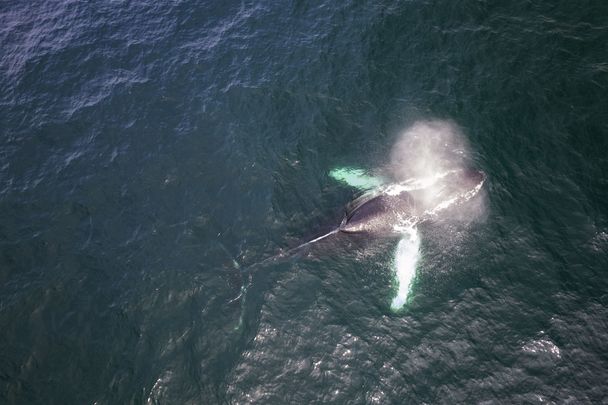The fascinating new documentary "Fathaigh na Farraige" dives into Ireland's little-known whaling history.
There are 26 different species of whale and dolphin in Irish waters, ranging from the porpoise (the smallest dolphin), to the blue whale, which is the largest animal on earth.
Airing on TG4 on Wednesday, September 18, "Fathaigh na Farraige" ("Giants of the Sea") unearths Ireland's little-known whaling past, from the establishment of Ireland's first whaling-station in 1780 by Donegal man Thomas Nesbitt (the inventor of the swivel gun-harpoon), to a Norwegian-owned industrial whaling-station set up on the Iniskea Islands off the coast of Mayo.
Founded in 1908, as whaling had been prohibited in Norway, the whalers’ policy of over-exploitation has had a lasting effect on whale populations here, with right, sei and blue whales driven close to extinction. Filmed in some of the country’s most spectacular locations, the programme explores our complex relationship with the sharks and cetaceans that swim in Irish waters, from our history of hunting them for food and profit, to today's efforts at conserving their populations.
These cetaceans were not the only gentle giants to be hunted to near-extinction in Ireland. For centuries, the basking shark – a slow and gentle filter-feeder, was hunted up and down the coast; and just after World War 2, the breathtakingly-beautiful Keem Bay and the nearby harbour or Poirtín on Achill Island, was the scene of the largest basking shark fishery in the world. During a period of mass emigration from the west of Ireland, the industry provided much-needed employment; but at what cost? With over 9,000 basking sharks killed on Achill Island alone between 1950 and 1965, basking sharks and cetaceans were hunted for one primary reason: oil.

Shark Hunters film crew. Courtesy of TG4.
"Fathaigh na Farraige" manages to condense our centuries-old complex relationship with these majestic animals into 50 minutes of captivating TV viewing, with interviews from former shark hunters, conservationists, marine archaeologists, and maritime historians.
Incredible archive footage is also featured - including footage of the very last shark killed in Keem Bay, as well as extraordinary footage from a 115-year-old film named "Whaling Afloat and Ashore" by Robert Paul, which documents whaling life on Iniskea.
Joanne O'Brien, a lecturer and researcher at ATU and member of the IWDG, and Andrew Shine from the IWDG have contributed to the "Fathaigh na Farraige" documentary.

Páiric Mac Amhoigh and Ted Sweeney. Courtesy of TG4.
Additionally, individuals from various counties are also participating:
Mayo: Ted Sweeney and Páiric Mac Amhoigh, An Fhód Dubh (Blacksod), historian Diarmuid Gielty, Brian McNeill - Former Basking Shark Fisherman, Sorsha Kennedy, Marine Scientist, Irish Basking Shark project and Mick Kane,Director, Achill Outdoor Training and Education Centre.
Donegal: Maritime Archaeologist, Martin McConigle, Stranorlar, and historian Helen Meehan, Mouncharles.
Kerry: Mick Sheeran, Ceann Trá (Ventry) - Blasket Island Eco Marine Tours and Tomás Ó Luing - Ionad an Bhlascaoid Mhóir.
Clare: Simon Berrow, Kilrush, Irish Basking Shark Group.
Cork: Zoologist, Conor Ryan, Cobh, Zoologist.
Filming locations include Keem Bay and Poitín Harbour on Achill Island, Co Mayo; Inis Ghé (Iniskea) in Co Mayo; Inver and Bruckless House in CoCounty Donegal; Loophead in Co Clare; Dingle Bay and the Blasket Islands in Co Kerry; and both Donegal Bay and Broadhaven Bay.
"Fathaigh na Farraige" was directed by Aenghus Mac Eochagáin and produced by Fiona Ní Eidhin of Snag Breac Films. The Galway-based production house has previously produced "Ón Mam go dtí na Major Leagues," "Typhoid Mary," and "A Bear."
"Fathaigh na Farraige" ("Giants of the Sea") airs on TG4 on Wednesday, September 18th at 9:30pm.




Comments